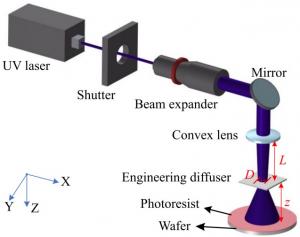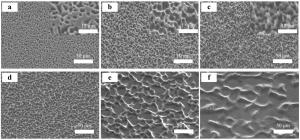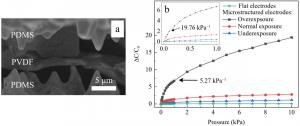Laser speckle grayscale lithography: a new tool for fabricating highly sensitive flexible capacitive pressure sensors
USA, August 28, 2024 /EINPresswire.com/ -- The introduction of micropatterns is an effective strategy in enhancing the sensitivity of capacitive pressure sensors. Towards this goal, scientist in China developed a novel approach for fabricating random conical array (RCA) microstructures based on laser speckle grayscale lithography. The RCA microstructures were used for fabricating highly sensitivity flexible capacitive pressure sensors. These sensors proved to be adept at capturing physiological signals and providing tactile feedback, thereby emphasizing their practical value.
Wearable devices have seamlessly become integrated into everyday life. Flexible pressure sensors are pivotal components of these devices. Their importance is heightened by the utilization of pressure as a primary mode of interaction in human settings. Thus, wearable technologies utilizing flexible pressure sensors have made significant strides in finding applications in human–machine interaction, health monitoring, and electronic skin. Capacitive pressure sensors suffer from an inherent limitation of low sensitivity. This is currently solved by embedding a micropattern into the electrodes or dielectric layers, which are tailored to augment the sensitivity and align with real-world application demands.
In a new paper (doi: https://www.light-am.com/en/article/doi/10.37188/lam.2024.035) published in Light: Advanced Manufacturing, a team of scientists, led by Professor Zhaomin Tong from State Key Laboratory of Quantum Optics and Quantum Optics Devices, Institute of Laser Spectroscopy, Shanxi University, China, have developed a laser speckle grayscale lithography system and a novel method for fabricating random conical array (RCA) microstructures using grainy laser speckle patterns. The feasibility is attributed to the autocorrelation function of the laser speckle intensity, which adheres to a first-order Bessel function of the first kind. Compared with other methods, such as DMD-based grayscale lithography, the process of creating these cone-like microstructures through laser speckle grayscale lithography has proven to be both straightforward and reliable. Through objective speckle size and exposure dose manipulations, they developed a microstructured photoresist with various micromorphologies. These microstructures were used to form polydimethylsiloxane microstructured electrodes that were used in flexible capacitive pressure sensors. These sensors exhibited an ultra-high sensitivity: 19.76 kPa−1 for the low-pressure range of 0–100 Pa. Their minimum detection threshold was 1.9 Pa, and they maintained stability and resilience over 10,000 test cycles. The reported method and technique also has potential applications in anti-reflections, fog collections, and wound healings.
DOI
10.37188/lam.2024.035
Original Source URL
https://www.light-am.com/en/article/doi/10.37188/lam.2024.035
Funding information
This work was supported by the Key Research and Development Program of Shanxi Province under Grant No. 202102030201002; the Changjiang Scholars and Innovative Research Team at the University of Ministry of Education of China under Grant No. IRT_17R70; the State Key Program of National Natural Science of China under Grant No. 11434007; the 111 Project under Grant No. D18001; the Fund for Shanxi “1331 Project” Key Subjects Construction.
Lucy Wang
BioDesign Research
email us here
Legal Disclaimer:
EIN Presswire provides this news content "as is" without warranty of any kind. We do not accept any responsibility or liability for the accuracy, content, images, videos, licenses, completeness, legality, or reliability of the information contained in this article. If you have any complaints or copyright issues related to this article, kindly contact the author above.



